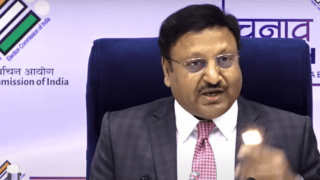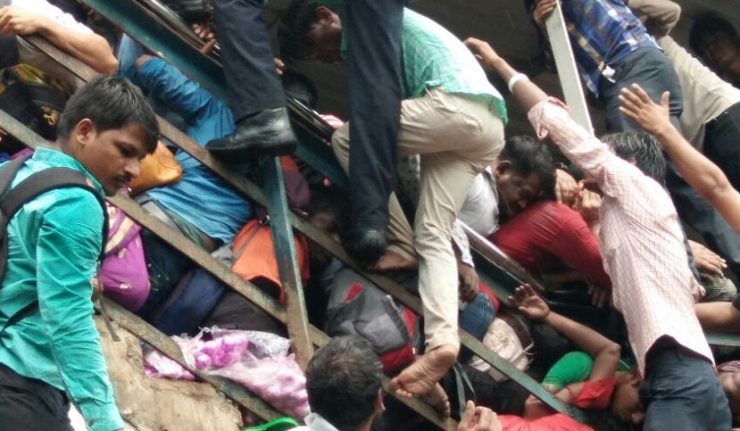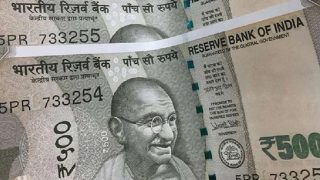For Mumbai’s regular local train commuters, the mood of foreboding is thick with the harsh reality that life could end with a simple ‘push’ during rush hour.
Their worst fears came true on Friday morning, when what should have been a festive weekend, turned into a horrific tragedy. At least 22 people were killed and scores injured in a stampede on the foot overbridge linking Elphinstone Road and Parel suburban train stations.
The British-era bridge with a single entry and exit staircase is used by hundreds of people everyday to commute to the commercial area that also houses several swanky corporate and media offices.
The bridge is also occupied by hawkers, reducing the space further for commuters to walk. The police at the exit control and the platform are often mere spectators.
But could this tragedy have been avoided?
Over the years, there have been letters, tweets and petitions informing the Railway Ministry and concerned authorities to take action, but the appeals by commuters always fell on deaf ears.
“Is Central Mumbai station ‘Parel’ awaiting a stampede?,” a Twitter user had warned former Railways Minister Suresh Prabhu a year ago, tagging an image of a crowded Parel station.
@sureshpprabhu @narendramodi Is central mumbai station ‘Parel’ awaiting a stampede? pic.twitter.com/hMhUm4wgJ3
— Chandan KK (@CKSquare) July 28, 2016
In October 2016, a user identifying himself as an investment analyst had tweeted, “If any Indian rail users die because of a stampede at Parel station, who would be responsible for his death?.”
He had also attached a video of how the people were standing at the edge of a platform while only one railway police personnel was managing the crowd.
If any @IndianRailUsers dies coz of stampede Parel station, who would be rspnbl 4his death? @sureshpprabhu @PMOIndia pic.twitter.com/4KuP5tmSVu
— Aditya Jadhav, CFA (@AdityaJadhav_) October 18, 2016
Just two days ago, a friend and former colleague Santosh Andhale had urged Railway Minister Piyush Goyal to fix the issue before it was too late.
@PiyushGoyal sir pls do something related to this Parel bridge in Mumbai. Thanks @WesternRly pic.twitter.com/2FNJbDMnvV
— Santosh Andhale (@Santosh_Andhale) September 27, 2017
If the government and railway authorities had acted upon these requests, things would have be very different for those who were tragically crushed to death on Friday.
In the backdrop of the stampede, Railway Minister Piyush Goyal held a series of meetings on the same day to review issues related to Mumbai’s suburban rails and gave directions for safety and capacity audit of foot over bridges where there is congestion. He also asked the Western Railways to identify locations prone to similar mishaps and draw up action plans for them.
“Wherever there is a need for a foot over bridges to be widened, we will do it immediately on high priority,” he told the media.
But did people have to be killed for the government to wake up and get cracking?
In 2009, the motorman and a passenger of a CST-Kalyan local were killed and 11 persons injured when a girder from a bridge under construction fell on a water pipeline in Thane.
In August last year, 29 people were killed when the old masonry-arch bridge built in 1928 on Savitri river in Mahad collapsed, and later it was built in record 165 days.
Last month, renowned gastroenterologist Dr Deepak Amrapurkar lost his life after he fell into an open manhole during the torrential rain. And less than a month after, the BMC’s F-south ward inspected 80% of the 5,175 manholes in the ward’s jurisdiction — including Elphinstone, Parel, Lalbaug, and Dadar areas.
Every year, at least once, the financial capital of the country comes to a standstill during rains. Thousands of commuters are left stranded at a railway station and people are forced to wade to flood waters and water-logged tracks.
The tragedy at Elphinstone station is neither the first nor will it be the last. The financial capital may see more such incidents unless an urgent overhaul is done of the several narrow and age-old foot overbridges.
On Saturday morning, many of the people who witnessed the incident closely or luckily escaped death will take the same route to reach their destinations. They will be hailed for their never-dying spirit and it will be cited as another example of how Mumbaikars always move on.
Mumbai is no stranger to tragedies. Whether it is bomb blasts, attacks, or floods, the citizens get back on the track the very next day. But today, it is not the spirit, but the feeling of helplessness that is palpable.
Yesterday, if the unfortunate incident had taken place at 7:00 am when I cross the same FoB everyday to reach office, I could have been one of the victims.
According to the Public Accounts Committee of the Railways, Mumbai suburban trains probably claim more lives than terror attacks. In the first six months of the year, around 1,590 people have been killed while travelling on trains.
Ofcourse, the issue has now taken a political turn. Even before the family members of the deceased could be consoled, the Western Railways blamed the rains, while Mumbai Mayor Vishwanath Mahadeshwar held the Railways responsible for the tragedy. The Congress party leaders protested in KEM where the injured were still being rushed, while the NCP demanded Goyal’s resignation.
This time, citizens must ensure that the ‘spirit of Mumbai’ is not used to cover for the repeated failures of the government and the administration. They must be held accountable for the deaths, irrespective of the political inclinations.
The city of dreams doesn’t need a Rs 3,600 crore Shivaji statue in the Arabian Sea or a Rs 1.1 lakh crore bullet train project. What we need is basic infrastructure, where people don’t lose their lives on their daily morning commute.



